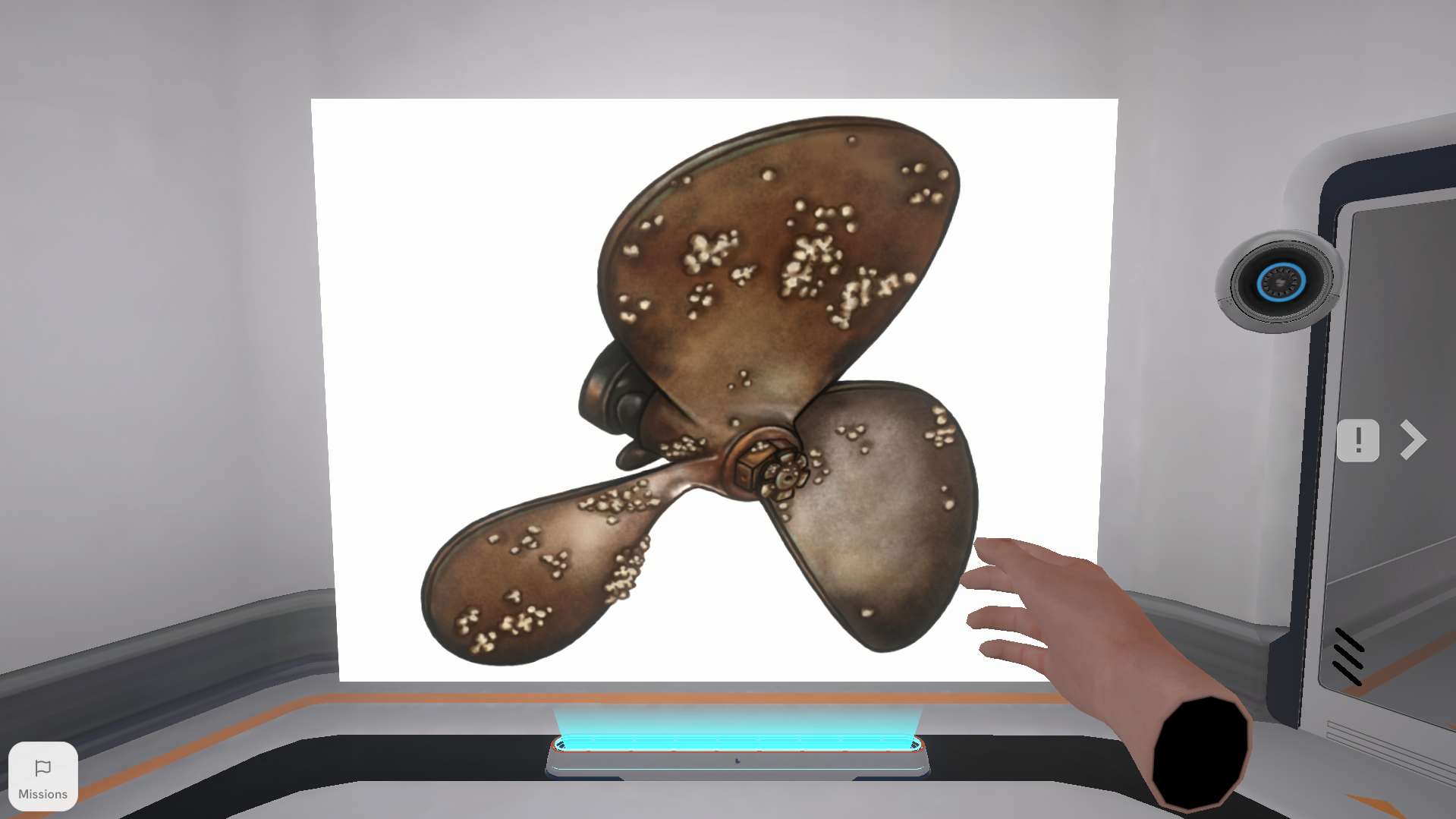Heading 1
Heading 2
Heading 3
Heading 4
Heading 5
Heading 6
Lorem ipsum dolor sit amet, consectetur adipiscing elit, sed do eiusmod tempor incididunt ut labore et dolore magna aliqua. Ut enim ad minim veniam, quis nostrud exercitation ullamco laboris nisi ut aliquip ex ea commodo consequat. Duis aute irure dolor in reprehenderit in voluptate velit esse cillum dolore eu fugiat nulla pariatur.
Block quote
Ordered list
- Item 1
- Item 2
- Item 3
Unordered list
- Item A
- Item B
- Item C
Bold text
Emphasis
Superscript
Subscript
About This Simulation
Discover single replacement reactions by witnessing the corrosive battle between seawater and aluminum ship propellers.
Learning Objectives
- Describe a single replacement reaction with an example
About This Simulation
Lab Techniques
- Balancing chemical equations
- Conducting single replacement reactions
- Observation and analysis of reaction outcomes
Related Standards
- PS1A
- PS1B
Learn More About This Simulation
In this simulation, take a fascinating journey to learn about single replacement reactions and their critical role in our world, especially within the marine environment. Get ready to dive deep into the chemistry underpinning ships' metal corrosion in seawater.
Unraveling chemical mysteries
Your mission is to investigate the corrosive battle waged by seawater against ships’ metal propellors. You'll observe a single replacement reaction through a hands-on experiment with copper chloride and aluminum. This exploration isn't just about watching reactions happen; it's about understanding the chemistry that keeps our maritime world afloat and finding innovative solutions to age-old problems.
Mastering scientific techniques
The techniques and skills you'll learn here are at the heart of academic and practical chemistry. From balancing equations to conducting delicate experiments, you'll engage in activities that real chemists do and accelerate your understanding of single replacement reactions.
Towards a corrosion-free future
How will you apply what you've learned to protect our maritime infrastructure? By the end of this simulation, you'll be equipped with the knowledge to answer this question and more. But the real question remains: How can we use this knowledge to innovate and protect our marine vessels for years?
Boost STEM Pass Rates
Boost Learning with Fun
75% of students show high engagement and improved grades with Labster
Discover Simulations That Match Your Syllabus
Easily bolster your learning objectives with relevant, interactive content
Place Students in the Shoes of Real Scientists
Practice a lab procedure or visualize theory through narrative-driven scenarios


For Science Programs Providing a Learning Advantage
FAQs
Find answers to frequently asked questions.
Heading 1
Heading 2
Heading 3
Heading 4
Heading 5
Heading 6
Lorem ipsum dolor sit amet, consectetur adipiscing elit, sed do eiusmod tempor incididunt ut labore et dolore magna aliqua. Ut enim ad minim veniam, quis nostrud exercitation ullamco laboris nisi ut aliquip ex ea commodo consequat. Duis aute irure dolor in reprehenderit in voluptate velit esse cillum dolore eu fugiat nulla pariatur.
Block quote
Ordered list
- Item 1
- Item 2
- Item 3
Unordered list
- Item A
- Item B
- Item C
Bold text
Emphasis
Superscript
Subscript
Labster can be integrated within a school's LMS (Learning Management System), and students can access it like any other assignment in their LMS. If your Institution does not choose an LMS integration, students will log in to Labster's Course Manager once they have an account created. Your institution will decide the access method during the sales process.
Labster is available for purchase by instructors, faculty, and administrators at education institutions. Purchasing our starter package, Labster Explorer, can be done using a credit card if you are located in the USA, Canada, or Mexico. If you are outside of North America or are choosing a higher plan, please speak with a Labster sales representative. Compare plans.
Labster simulations are created by real scientists and designed with unparalleled interactivity. Unlike point and click competitors, Labster simulations immerse students and encourage mastery through active learning.
Labster supports a wide range of courses at the high school and university level across fields in biology, chemistry and physics. Some simulations mimic lab procedures with high fidelity to train foundational skills, while others are meant to bring theory to life through interactive scenarios.














